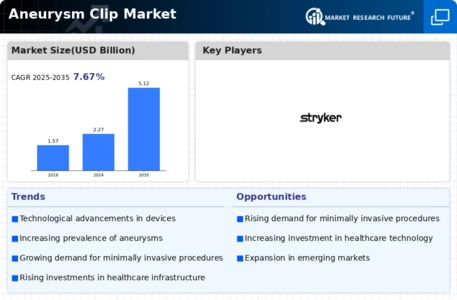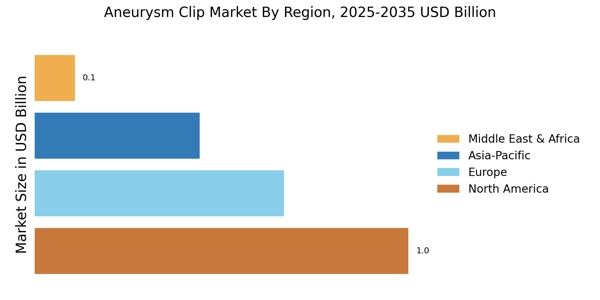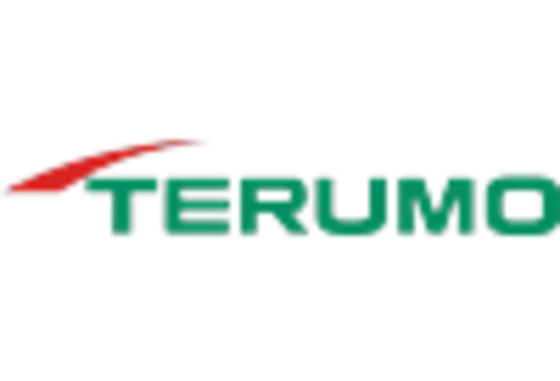Rising Incidence of Aneurysms
The increasing prevalence of aneurysms is a notable driver for the Aneurysm Clip Market. As populations age, the risk of developing aneurysms rises, leading to a greater demand for effective treatment options. According to recent data, the incidence of cerebral aneurysms is estimated to be around 3-5% in the general population, with a higher occurrence in individuals over 50 years of age. This demographic shift necessitates advancements in surgical techniques and devices, including aneurysm clips, to ensure better patient outcomes. The growing awareness of aneurysm risks and the importance of early detection further fuels the market, as healthcare providers seek innovative solutions to address this critical health issue.
Growing Awareness and Education
The growing awareness and education regarding aneurysms and their treatment options are pivotal for the Aneurysm Clip Market. Public health campaigns and educational initiatives by healthcare organizations are enhancing knowledge about the risks associated with aneurysms. This increased awareness encourages individuals to seek medical advice and undergo screening, leading to earlier diagnosis and treatment. As patients become more informed about their health, they are more likely to opt for surgical interventions when necessary. Consequently, this trend drives demand for aneurysm clips as a preferred treatment method. Additionally, healthcare providers are focusing on educating their staff about the latest advancements in aneurysm treatment, further promoting the use of innovative surgical devices.
Increasing Healthcare Expenditure
Rising healthcare expenditure is a significant driver for the Aneurysm Clip Market. As countries allocate more resources to healthcare, there is a corresponding increase in the availability of advanced medical technologies, including aneurysm clips. Data indicates that healthcare spending has been on an upward trajectory, with many nations investing heavily in surgical innovations. This trend is particularly evident in regions with aging populations, where the demand for neurosurgical interventions is escalating. Enhanced funding allows hospitals to procure state-of-the-art aneurysm clips, thereby improving treatment options for patients. Furthermore, increased healthcare budgets often lead to better training for medical professionals, ensuring that they are equipped to utilize these advanced devices effectively.
Expansion of Neurosurgical Facilities
The expansion of neurosurgical facilities is a crucial driver for the Aneurysm Clip Market. As healthcare systems evolve, there is a growing emphasis on establishing specialized centers for neurosurgery. This expansion is driven by the increasing demand for surgical interventions related to aneurysms and other neurological conditions. New facilities are being equipped with advanced surgical technologies, including state-of-the-art aneurysm clips, to enhance patient care. The establishment of dedicated neurosurgical units allows for more focused treatment approaches, improving surgical outcomes. Furthermore, as these facilities become more prevalent, they contribute to the overall growth of the market by increasing the accessibility of aneurysm treatments to a broader patient population.
Technological Innovations in Surgical Devices
Technological advancements in surgical devices are transforming the Aneurysm Clip Market. Innovations such as the development of advanced materials and designs for aneurysm clips enhance their effectiveness and safety. For instance, the introduction of bio-compatible materials reduces the risk of complications, while improved clip designs facilitate easier application during surgery. The market is witnessing a surge in research and development activities aimed at creating next-generation aneurysm clips that offer better performance. As a result, hospitals and surgical centers are increasingly adopting these advanced devices, contributing to the overall growth of the market. The integration of robotics and minimally invasive techniques further supports this trend, as surgeons seek to improve patient recovery times and surgical outcomes.


















Leave a Comment